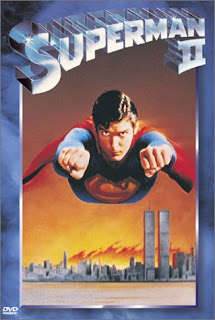Math in the Movies: Superman II
There is a joke in mathematics circles that has become well-known enough to merit its own entry on Wikipedia. This joke is referred to as the Teakettle Principle. Here's how it goes:
A mathematician and an engineer go into the kitchen one day to make a pot of tea. Finding an empty kettle on the stove, they fill it with water, then turn on the stove and let the water boil, following the usual protocol when making tea.
The next day, the two again decide to make a pot of tea. However, upon entering the kitchen, they find that the kettle on the stove has already been filled with water! Now faced with a new problem, the engineer suggests that they simply heat the water that's already in the kettle.
"Nonsense!" the mathematician replies. "It would be far simpler to pour the water out and replace the empty kettle on the stove top. Then we will have reduced this problem to one we have already solved!"
Ok, so the joke isn't that funny. Its charm comes from its needling of the mathematical proclivity to reduce new problems to ones that have already been solved, sometimes even when a solution to the new problem may be readily available.
It is with this mentality that I wish to discuss Superman II with you. For you see, the problem of discussing this movie as it pertains to mathematics has already been solved in an excellent post at Overthinkingit. The name of the post is called The Math of Steel, and it thoroughly analyzes, from a mathematical perspective, the plausibility of a scene involving Superman, Niagara Falls, and a falling child. It's really a very good example of how even superheros can benefit from a knowledge of mathematics.
Therefore, since this problem has already been solved, the problem of me discussing this film from a mathematical perspective can now also be solved, just by using the link above. You can thank the teakettle principle for that.
Psst ... did you know I have a brand new website full of interactive stories? You can check it out here!
comments powered by Disqus

